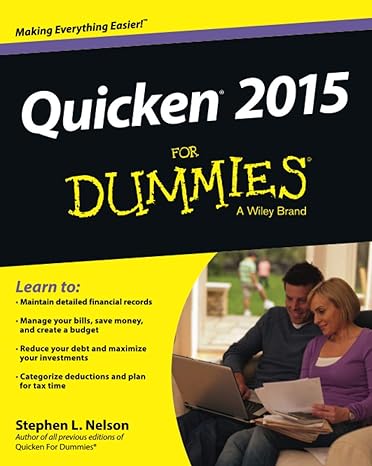Question
300-579 Very Poor 16% Credit applicants may be required to pay a fee or deposit, and applicants with this rating may not be approved for
| 300-579 | Very Poor | 16% | Credit applicants may be required to pay a fee or deposit, and applicants with this rating may not be approved for credit at all. |
| 580-669 | Fair | 17% | Applicants with scores in this range are considered to be subprime borrowers. |
| 670-739 | Good | 21% | Only 8% of applicants in this score range are likely to become seriously delinquent in the future. |
| 740-799 | Very Good | 25% | Applicants with scores here are likely to receive better than average rates from lenders. |
| 800-850 | Exceptional | 21% | Applicants with scores in this range are at the top of the list for the best rates from lenders. |
Use the (Sample Credit Scoring Table above), determine the credit score for the following family units. After calculating the score, determine which of the types of credit (listed below), if any, you would feel comfortable adding to each family unit (based on the score). Finally based on the pricing strategy and competition for these products in your market, determine a cost of the chosen credit product(s) and determine you pricing (interest rate and terms) for each.
- Automobile Loan (new car)
- Bankcard (gold version)
- Bankcard (secured)
- Boat/RV Loan
- 1st mortgage
- Home equity line of credit
- Personal loan (unsecured)
Family Unit C
Family Unit C is 25 years old, graduated with a Bachelor degree in Business. She/he is single, has no children, and has a full-time job with an annual salary of $30,000. Her/his employer offers a full range of benefits, including health insurance, group life insurance and a 401k retirement plan. Family Unit C currently lives in an apartment. There are no financial assets other than $5,000 in a certificate of deposit, $20,000 in a savings account and $3,000 in a checking account. This individual has not begun participating in the 401k plan (although he/she is eligible). Payroll taxes represent $3,500 and normal annual expenses are $20,000.
Additional information:
1 recent credit inquiries
3 number of satisfactory ratings
0 number of 90 day ratings
1 number of past due balances
1 number of bankcards
$0 - $250 bankcard balances reported in the last 12 months
Family Unit D
Family Unit A is 55 years old, married with two children (ages 16 and 17) living in a rental home. The wife has a full-time job after earning a Bachelor degree in Finance and is earning $68,000 annually. The husband is not employed at this time, though he had a part-time job up until a month ago. The wifes employer offers health insurance that the employee must contribute $100 per month for family coverage. There is no life insurance provided by the employer, nor any time of retirement plan at this time (other than the IRA mentioned below). This individual has $25,000 in a checking account, and $40,000 in a savings account and $60,000 in a certificate of deposit, and $50,000 in an Individual Retirement Plan. Payroll taxes represent $8,500 and normal annual expenses are $35,000.
Additional information:
4 recent credit inquiries
2 number of satisfactory ratings
1 number of 90 day ratings
1 number of past due balances
2 number of bankcards
$7500-$10000 bankcard balances reported in the last 12 months
Step by Step Solution
There are 3 Steps involved in it
Step: 1

Get Instant Access to Expert-Tailored Solutions
See step-by-step solutions with expert insights and AI powered tools for academic success
Step: 2

Step: 3

Ace Your Homework with AI
Get the answers you need in no time with our AI-driven, step-by-step assistance
Get Started


